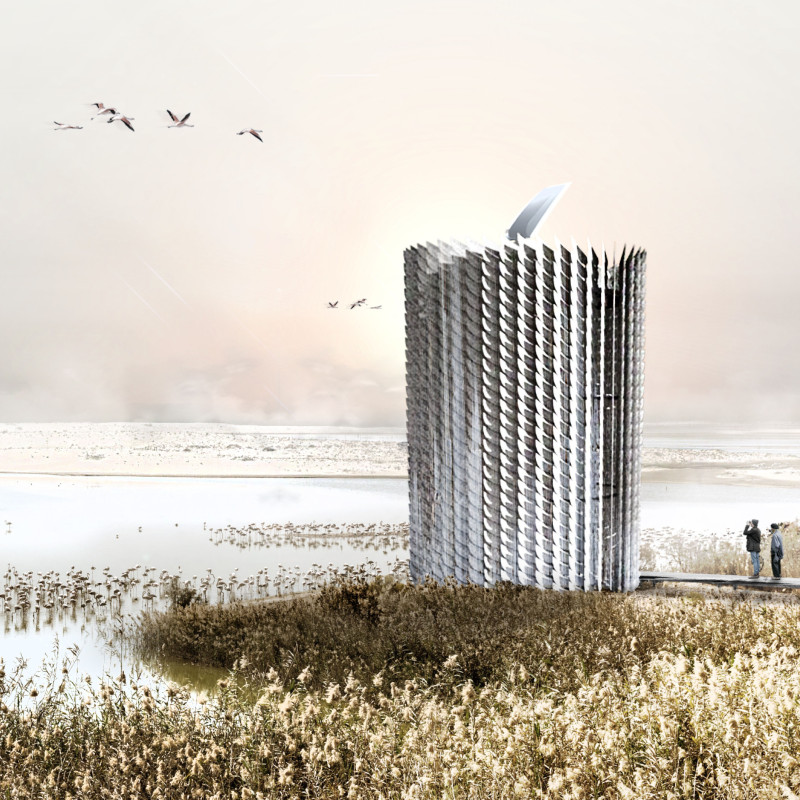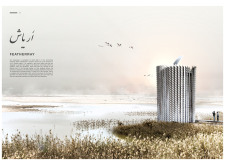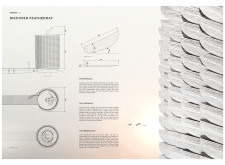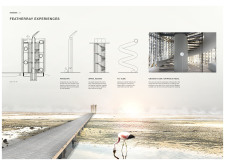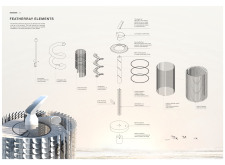5 key facts about this project
The Featherray Observatory is located in the Al Wathba region and is designed to blend with the surrounding wetlands. It emphasizes a connection with nature while allowing visitors to interact with the landscape. The design draws inspiration from birds, particularly flamingos, focusing on their delicate forms and graceful movements. The observatory serves as a viewing platform, providing a new perspective on the ecological environment.
Conceptual Formulation
The structure features a cylindrical shape that enhances fluidity and mimics the natural landscape. At the top is the 'Reed Tip,' which is covered in mirrored glass. This part stands out as both a marker and a functional feature, allowing visitors to see the sky while reinforcing the relationship between the observatory and the natural world.
Materials and Aesthetic Integration
The exterior is clad in grey larch feather tiles. These tiles create a soft look and make the building feel less imposing within its environment. Their arrangement resembles bird feathers, helping to convey the overall concept of lightness and connection to the wetlands. The design effectively removes sharp edges, allowing for a more inviting presence.
Visitor Experience and Interaction
The layout promotes engagement, making the visit more immersive. Upon entering, visitors go through a hidden door that blends into the feather cladding. This welcomes them into a darker interior that contrasts with the bright outside. Inside, there is a periscope opening and a seating area that invite reflection and relaxation. As guests ascend to the top, they enjoy unobstructed, 360-degree views of the wetlands, framed by a feathered balustrade.
The observatory also includes playful elements, such as a slide for descending. This adds a layer of fun and encourages interaction. Each aspect of the design works together, allowing people to appreciate the beauty of the wetlands while surrounded by thoughtfully integrated architectural features.


